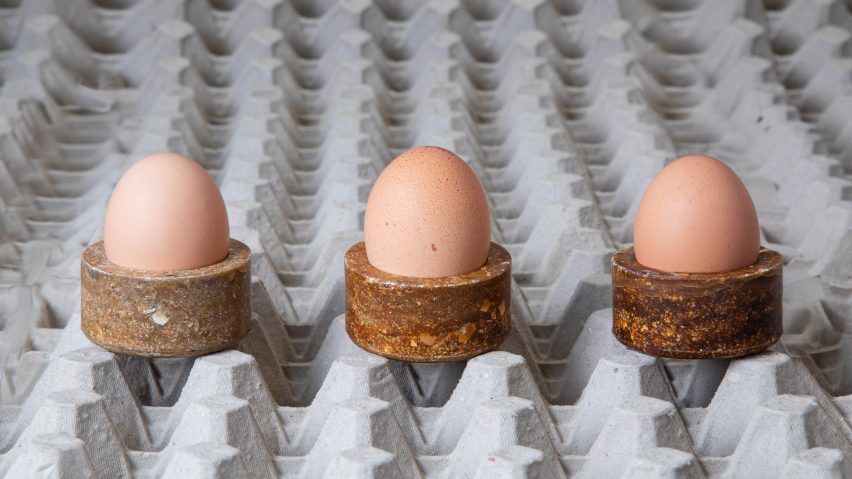
Basse Stittgen gives discarded eggs new life as bioplastic tableware
German designer Basse Stittgen aims to address the issue of global food waste and overconsumption with a series of tableware objects made solely from out-of-date eggs.
As part of his project, called How Do You Like Your Eggs?, Stittgen aims to explore the "extraordinary materiality" of commonplace items, such as waste food.
As a result, function and material unite as Stittgen turns discarded eggs into a series of golden-hued bioplastic egg cups and saucers, patterned with flecks of the broken shells.
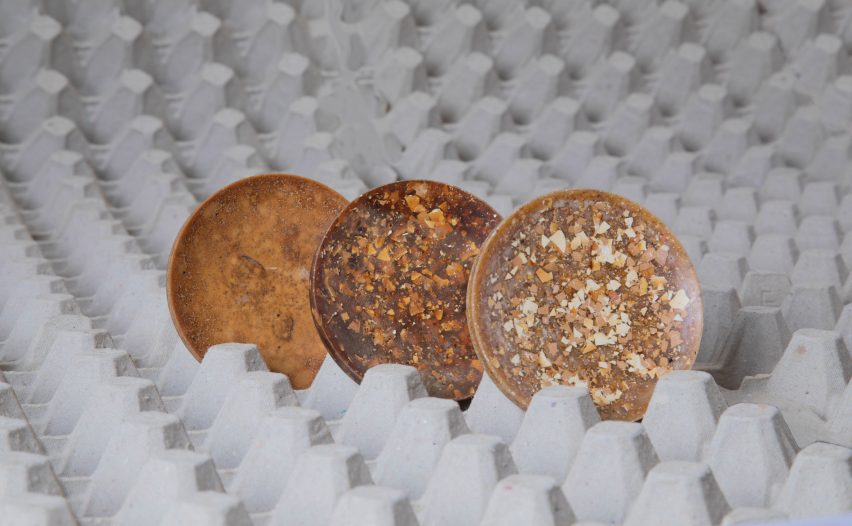
"Annually, an average of 6.4 billion hens lay 1.1 trillion eggs," said Stittgen. "Simultaneously, one third of all food per year is lost or wasted, which includes eggs that have a short shelf-life and whose fragile shell is not the most suitable protection against processing and transport."
"From domestication to industrialisation, the value of chickens and their eggs has progressively decreased," he continued.
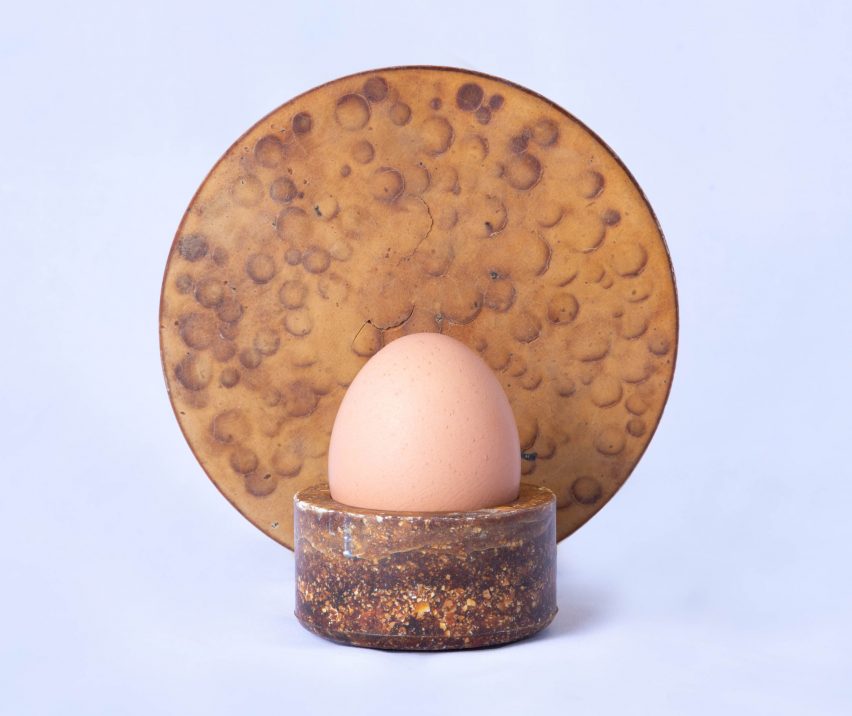
How Do You Like Your Eggs? aims to address this shift in value by generating awareness about the scale of egg waste, and more specifically about our consumption habits.
"In today's context, traditional non-degradable plastics are highly problematic, especially because of our throw-away culture," said Stittgen.
"Opposed to that, in this project a new, fully degradable bioplastic is used to create a narrative about consumption and waste," he added.
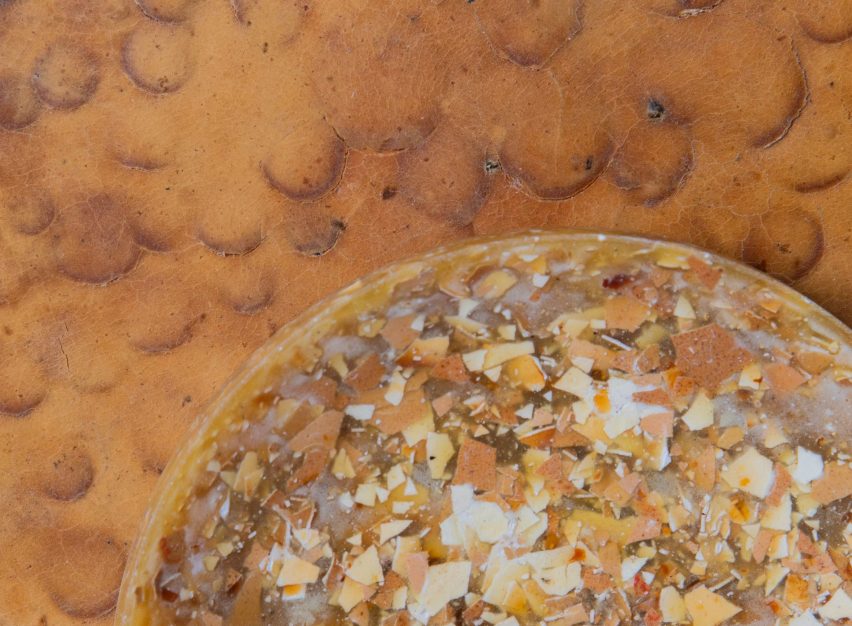
Stittgen first collects eggs leftover from local bakeries before cracking and splitting them into white, yolk and shell. The egg whites are dehydrated and ground into a powder, while the shells are crushed into small pieces.
These two elements are mixed together and placed into an aluminium mould, which is then heat-pressed at 200 degrees.
This causes the albumin protein found in egg whites to form polymers under the heat and pressure, which forms a protein-based biopolymer without any additional plasticiser.
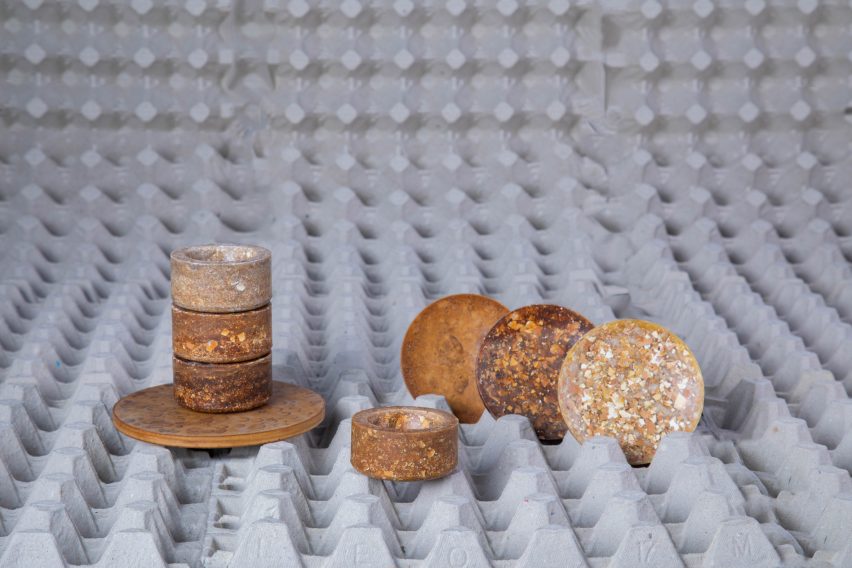
While Stittgen sees the development of more sustainable materials as important in mitigating climate change, he also recognises that this is not getting to the root of the issue.
What must be addressed, he argues, is the behaviour of producers and consumers in their overconsumption.
"If the production of, for instance, polylactic acid (PLA) made from corn starch was to be scaled up to a point that it would replace fossil-fuel-based plastics, then the production of PLA would become a huge environmental problem in itself," explained the designer.
"I think what needs to change alongside the materials that we use is our behaviour as consumers and producers towards them," he continued.
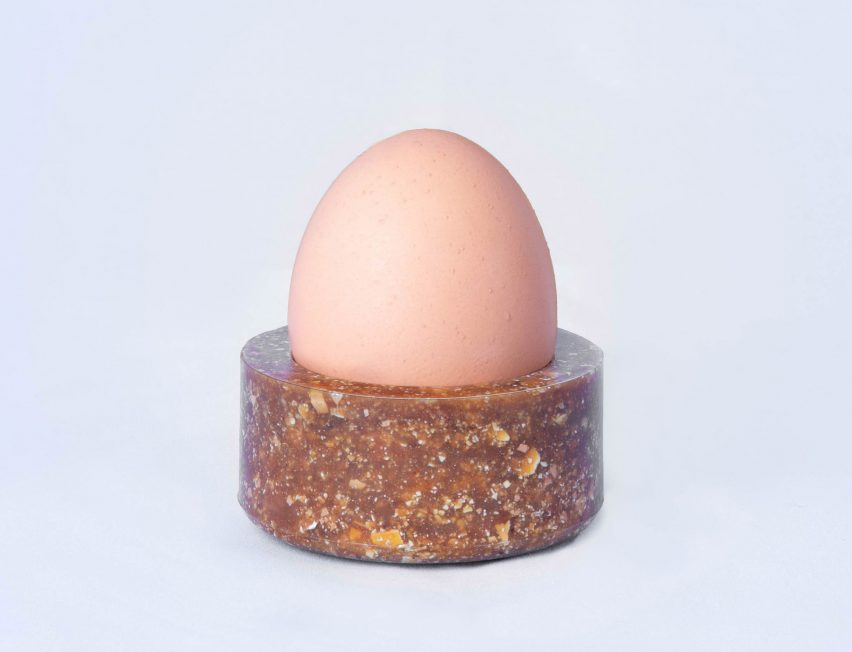
"It's possible that there can't be any non-problematic materials until systems and our habits of consumption become non-problematic," Stittgen added. "And this is what I'm trying to address with this project."
How Do You Like Your Eggs? fundamentally aims to generate awareness around food waste by "physicalising it and placing it in the living room of the consumer".
Stittgen isn't setting out to replace ordinary plastics, but rather to remind us that resources – especially food – are precious and need to be "handled with great care", just as eggs do.
One of the designer's previous projects saw him use blood leftover from the meat industry to create a collection of small objects, including a jewellery box and a record player.
In a similar process to the egg cups, Stittgen dried out the blood and created a powder, which was then heated and pressed into shape to form a protein-based biopolymer.